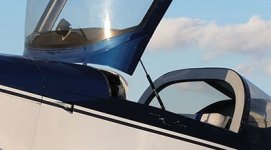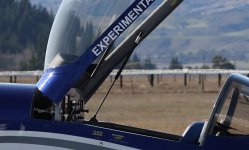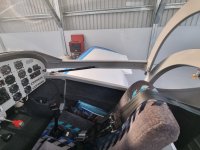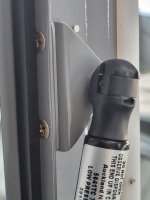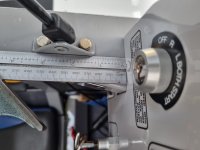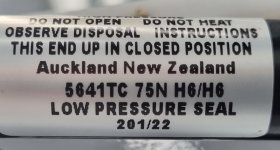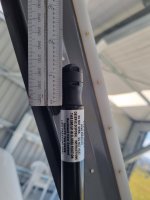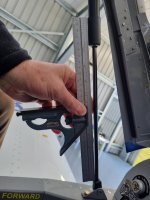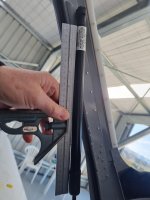planenutz
Well Known Member
Installing gas struts on tip-up a canopy is a modification that has been around almost since the beginning. Certainly I recall gas struts were in service well before 1995… back in the "black and white days" (as my teenage daughter reminds me) when we all thought fax machines were a cool thing and most of the fax paper was used sending each other funny jokes. Communications about new ideas were typically passed around the globe by the RVator Newsletter and it took a while from the time an idea was first presented until the time we all caught up with it.
The gas struts were one of those modifications where somebody came up with a good idea, then somebody came up with a better idea, but the better idea was overshadowed by the lack of communication at the time. Everyone followed the guy in front of him and not a lot of additional thought was put into changing something that worked. A random photo is provided below of the standard setup most people employ (first picture).
Consider the geometry of the gas struts most people install. Everyone recognises that placement of the fuselage attachment halfway down the cockpit longeron is a bit restrictive as you catch your foot on it as you enter and exit the aircraft. Additionally, as you lower the canopy there is a point where the gas strut can no longer support the weight of the canopy and for the person closing the canopy, it gets heavy. Then as you close the canopy further the gas strut is pushing forward and providing no useful assistance at all. With the canopy in the up position the gas struts are holding everything quite secure and this is of course something we want, especially on a windy day. It works, but it could be better.
There is another method. I can’t take credit for the idea (sadly) but in my mind the geometry is better in every way. Refer to the second photo below. The gas struts are attached to the longeron further forward for a start, providing much easier entry and egress from the cockpit. The gas struts support the weight of the canopy almost all the way down so at no time do you end up supporting the entire load of the canopy above your head. In fact on most aircraft you can have the canopy open a couple of inches and the gas struts will hold it there with ease. There is no “over-center” to work against you. In the full open position the canopy is just as secure as the more frequently used geometry, if not more so, as it is supported further up the canopy rail.
Overall its just a smarter idea.
The gas struts were one of those modifications where somebody came up with a good idea, then somebody came up with a better idea, but the better idea was overshadowed by the lack of communication at the time. Everyone followed the guy in front of him and not a lot of additional thought was put into changing something that worked. A random photo is provided below of the standard setup most people employ (first picture).
Consider the geometry of the gas struts most people install. Everyone recognises that placement of the fuselage attachment halfway down the cockpit longeron is a bit restrictive as you catch your foot on it as you enter and exit the aircraft. Additionally, as you lower the canopy there is a point where the gas strut can no longer support the weight of the canopy and for the person closing the canopy, it gets heavy. Then as you close the canopy further the gas strut is pushing forward and providing no useful assistance at all. With the canopy in the up position the gas struts are holding everything quite secure and this is of course something we want, especially on a windy day. It works, but it could be better.
There is another method. I can’t take credit for the idea (sadly) but in my mind the geometry is better in every way. Refer to the second photo below. The gas struts are attached to the longeron further forward for a start, providing much easier entry and egress from the cockpit. The gas struts support the weight of the canopy almost all the way down so at no time do you end up supporting the entire load of the canopy above your head. In fact on most aircraft you can have the canopy open a couple of inches and the gas struts will hold it there with ease. There is no “over-center” to work against you. In the full open position the canopy is just as secure as the more frequently used geometry, if not more so, as it is supported further up the canopy rail.
Overall its just a smarter idea.



